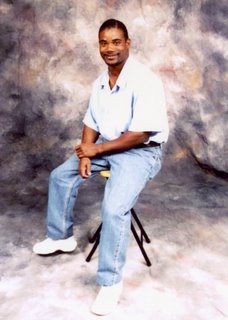Prisons, Immigrants, and a Culture of Life
There is one place where immigrants are not only unwanted but also where they absolutely shouldn’t be—prison.
Like prisoners, immigrants are already stigmatized, discriminated against and exploited by a voracious labor market. Immigrants, like prisoners, are all too familiar with being profiled, abused, and having their families separated by the system.
Many prisoners can relate to the plight of the immigrant for other reasons, too. Immigrants are largely undereducated and many are poor. Like those who generally become prisoners, immigrants find it extremely difficult to contest state charges, even when not guilty of the crime accused. Like prisoners, immigrants often find themselves the scapegoat for society’s ills when, in reality, disparate social policies—here and abroad—make up our collective ills.
With all the commonalities, a cynical mind just might believe we actually belong together. Perhaps that’s what Congressman James Sensenbrenner was thinking when he introduced H.R. 4437, the onerous bill that would make felons out of an estimated twelve million misdemeanor border-crossers; much like what California’s Three Strikes law did to 43,000 nonviolent poor and petty offenders; that’s according to a 2005 State Legislative Analyst Office report.
On a national scale, there are already 2.1 million prisoners behind bars in this country. A number that surpasses any period in our history, and shamefully exceeds every other nation—including China, which has almost five times the general population of the U.S.
So where would we put twelve million new felons if H.R. 4437 became law? Realistically, if just three million, or one-third of the twelve million immigrants, were caught we’d have to build two times the prisons we currently have. And for what? To maliciously incarcerate scores of hard working, contributing and otherwise law-abiding people?
On the inside we’re already woefully overcrowded. Instantly doubling the national prison population would turn prison yards into friction-agitated powder kegs.
As it is, we’re pitted against one another for scarce resources like mattresses—though they’re wafer thin. Library seats come twelve per session, though there are one thousand prisoners in each yard. Jobs and educational assignments are frustratingly limited, not to mention the food rations and lack of medical care so egregious that a prisoner a week was dying until a federal judge intervened in early April.
So be warned; let the recent murderous melees and racial riots at California’s inundated jails and prisons serve as an omen to the rest of the nation. Needless, expensive, massive and inhumane incarceration is, in many ways, murder and should be vehemently resisted by a nation that boasts a culture of life.
Sources:
Sources:
California State Analysts Office, 2005, “Three Strikes: The Impact After More Than a Decade.”
Jennifer Warren, State Prisons Chief Resigns After 2 Months on the Job,” Los Angeles Times, April 20, 2006, A1
You can hear audio commentaries of Dortell at www.thousandkites.org.
Jennifer Warren, State Prisons Chief Resigns After 2 Months on the Job,” Los Angeles Times, April 20, 2006, A1
You can hear audio commentaries of Dortell at www.thousandkites.org.


0 Comments:
Post a Comment
<< Home